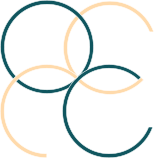At Oregon Cosmetic and Reconstructive Clinic, our board certified plastic surgeon performs tummy tuck Portland Oregon (abdominoplasty) to tighten and rejuvenate the belly after pregnancy, weight loss, genetics, or aging. Dr. Tina Jenq provides expert care and personalized treatment to flatten and repair the shape of the belly. We also proudly serve the Portland Metro Region, including Happy Valley, Lake Oswego, Clackamas, Gresham, West Linn, and beyond.
What Is a Tummy Tuck (Abdominoplasty)?
A tummy tuck, or abdominoplasty, removes loose skin and fat both above and below the belly button. It also tightens abdominal muscles to restore a smoother, firmer shape.
Why Choose Tummy Tuck Portland Oregon?
- Loose or Sagging Belly Skin – Remove loose skin from aging, pregnancy, or weight fluctuations.
- Separated Abdominal Muscles (Rectus Diasthasis) – Repair stretched “six pack muscles” of the abdominal wall to improve core strength and posture.
- Stretch Marks – Decrease the amount of stretch marks on the belly area.
- Stretched Belly Button– Improve the appearance of the belly button that has loosened or become hidden over time.
- Reshape the Pubic Area – Decrease and lift the mons area for a more natural proportioned appearance
Tummy Tuck Techniques
- Low Transverse Tummy Tuck with Umbilical Transposition – This most common method uses a low horizontal abdominal incision. Then the belly button is brought out to a new part of the skin to maintain a natural appearance.
- Mini Tummy Tuck Portland Oregon with Floating Umbilicus – Perfect for mild lower belly skin excess. The smaller incision leaves the belly button stays attached, and sometimes moving slightly downward.
- Fleur-de-Lis Abdominoplasty – Best for major skin excess, especially after massive weight loss. A vertical incision added to the lower incision tightens both the height and width of torso skin.
Option to Enhance Results with Additional Procedures
- Abdominal Plication – tightens stretched abdominal muscles along the midline, to centralize the “six pack” muscles. Thereby restoring core strength and shape.
- Liposuction – Liposuction sculpts stubborn areas like the flanks and upper abdomen. It’s often combined with a tummy tuck for enhanced definition.
What to Expect from Tummy Tuck
- Consultation – Dr. Tina Jenq discusses your goals with you after an examination to determine the best approach.
- Surgery – Same day surgery performed under general anesthesia with expert precision and care. Occasionally, patients may benefit from overnight hospital stay.
- Recovery – Our patients heal usually in about 3-4 weeks, with continued improvement over several months.
- Results – Feel confident with rejuvenated, youthful body shape.
What Sets Our Practice Apart
Choosing a surgeon is an important decision—and you deserve to know who will be performing your procedure. At our clinic, Dr. Jenq performs every part of the surgery from start to finish. Unlike some practices where surgical tasks may be delegated to trainees, residents, or surgical technicians, your care will never be passed off to someone else. This direct attention not only supports safety and consistency but ensures that your experience is truly individualized.
Quilting Sutures for Better Results Improve abdominal shape and precisely repositioning skin over the abdominal wall. An added benefit is reduced fluid buildup to support natural healing.
Why Drains Are Used – Drains gently remove fluid under the skin. They’re temporary and usually removed 1–2 weeks after surgery.
How Much Does a Tummy Tuck Cost in Oregon?
At Oregon Cosmetic and Reconstructive Clinic, the average cost of a tummy tuck (abdominoplasty) is approximately $11,061. If liposuction is included with the tummy tuck, the total cost is approximately $16,129.
What’s Included in the Price?
- Board-certified plastic surgeon’s fee
- Anesthesia costs
- Surgery facility fee
What Can Affect the Final Price?
- The complexity of the procedure
- Whether liposuction is performed at the same time
- Your anatomy and goals
- Any customized surgical approach needed
We provided a personalized quote after your consultation, based upon your specific treatment plan.
Schedule Your Tummy Tuck Portland Oregon Consultation Today
If you’re considering a tummy tuck Portland Oregon surgery in the Portland Metro region, trust Dr. Tina Jenq at Oregon Cosmetic and Reconstructive Clinic. Contact us today for expert care and real answers. Also, for more information about tummy tuck procedures, visit the American Society of Plastic Surgeons.


